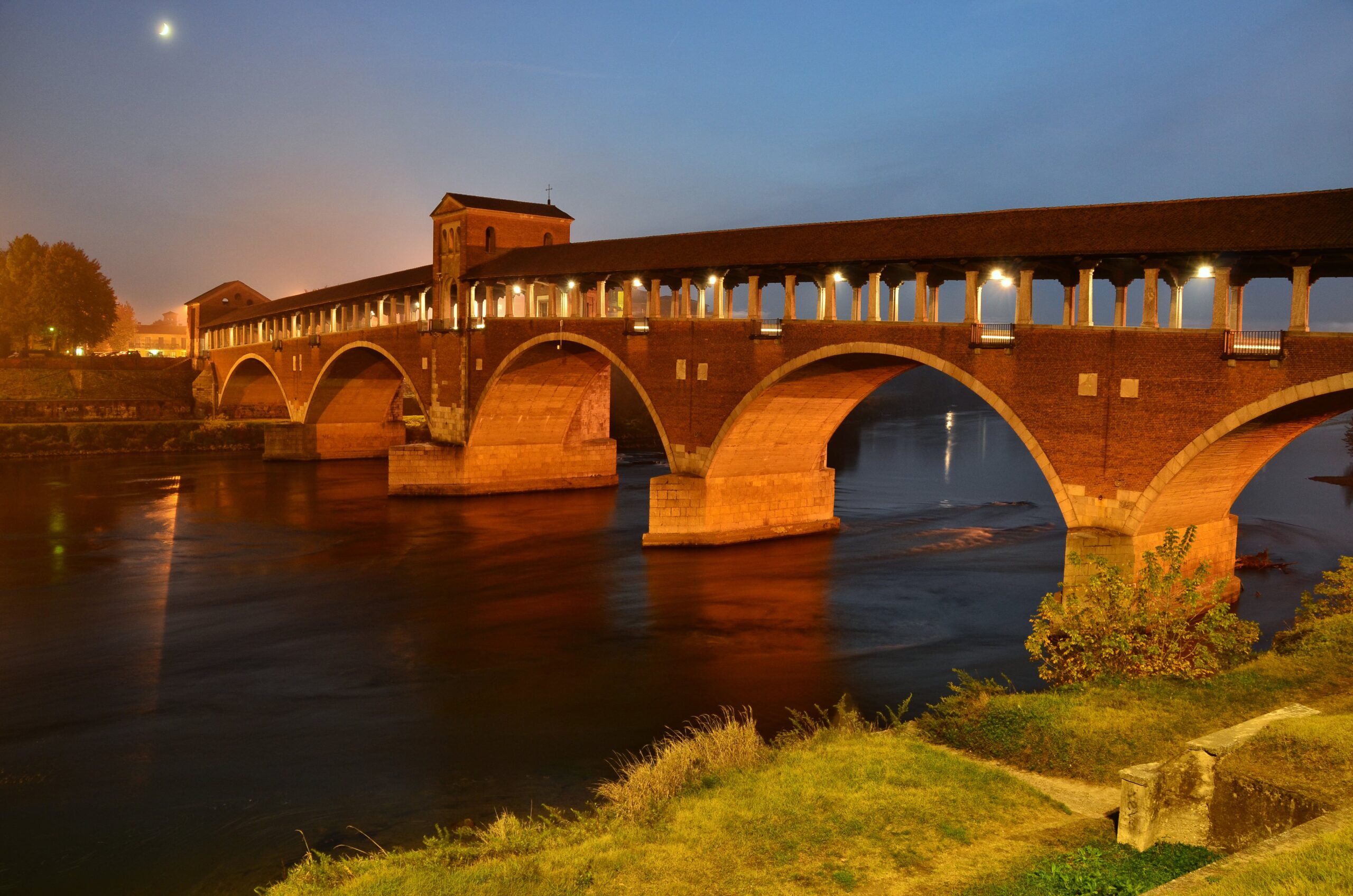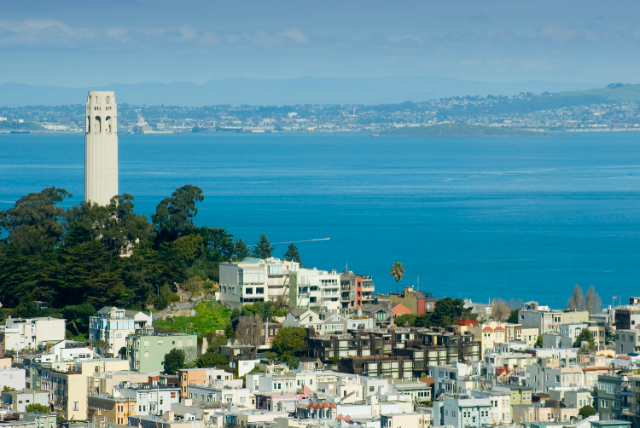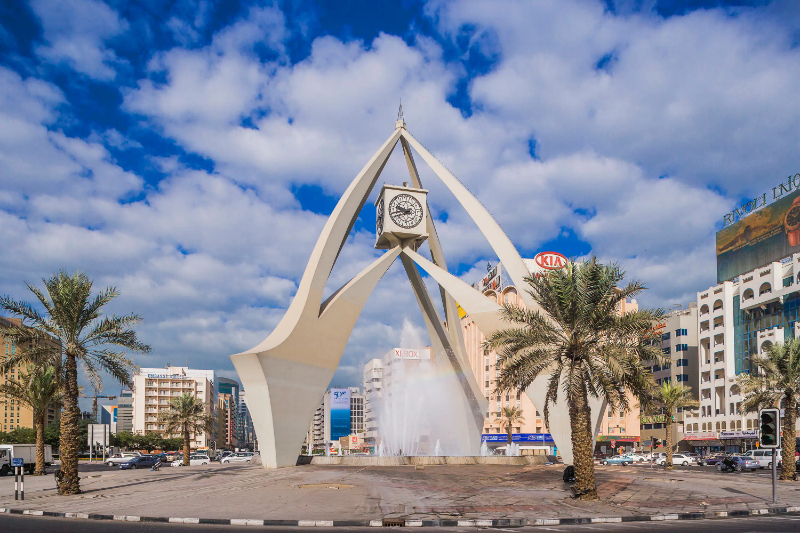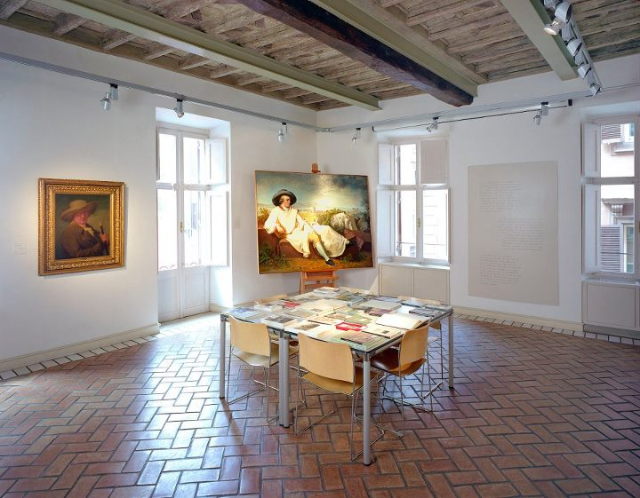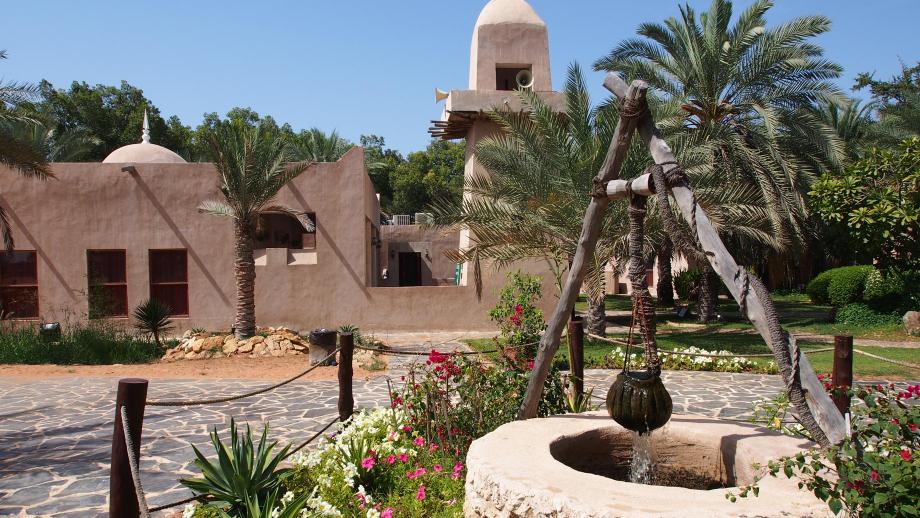Already in Roman times, in the ancient city of Ticinum, there was an early bridge connecting the two banks of the river at the height of the modern Covered Bridge.
Of this bridge remains, easily visible during lean periods, the base of a central pier, made of trachyte from the Euganean Hills.
The construction of the Roman bridge dates back to the time of Augustus.
In 1352 construction began on the ruins of the Roman bridge on a new bridge, designed by Giovanni da Ferrara and Jacopo da Cozzo. The bridge, completed in 1354, was covered and had ten irregular arches and two towers at either end, which served for defense; the appearance of this bridge can be seen in Bernardino Lanzani’s frescoes (c. 1525/26) inside the church of San Teodoro.
In 1583 the roof was replaced with a new roof supported by one hundred granite pillars according to the wishes of the Visconti family.
During the construction of the Spanish walls in the 17th century, the first arch and a half toward the city and the first arch on the borough side were included in the ramparts and, therefore, closed.
Later an entrance portal on the Borgo Ticino side (1599), a chapel in the middle of the bridge in honor of St. John of Nepomuk (18th century) were added.
Finally, in 1882 an entrance portal was erected by Amati on the old town side.
Bombing by Allied forces in September 1944 during World War II damaged the ancient 14th-century bridge and caused one archway to collapse.
In 1949 construction of the new bridge began, and it was inagurated in 1951. On the portal on the city side an epigraph reads, "On the ancient crossing of the cerulean Ticino, in the image of the ancient Ponte Coperto, demolished by the fury of war, the Italian Republic rebuilt."
The present bridge was built about 30 meters downstream from the previous one, and is wider and higher than the old one. The arches are wider and fewer in number: five instead of seven. The bridge is now also shorter in that it follows a path perpendicular to the river current, whereas the old one followed the line joining Strada Nuova (on the downtown side) with Via dei Mille (on the Borgo Ticino side.
